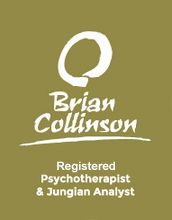Afternoon Trickster: Facing Ambiguity in the Second Half of Life

Facing ambiguity in the second half of life is one of the major challenges for people moving through the midlife transition and into later life.

Juneau City Hall: Raven, the Tlingit trickster, with first humans
An honest journey into the second half of life shows us many situations and circumstance that are ambiguous and paradoxical. These can create great psychological discomfort.
Sometimes individuals will do almost anything to avoid the tension these realities create. We all know older people who have succumbed to some of the well-known “exits” from ambiguity:
- Hypochondria – often the displacement of the anxiety created by living into continual fantasies of physical illness;
- Being a Curmudgeon – running away from the challenge and risk of confronting the other, through holding everyone at a distance through a thick crust;
- Past Worship – You know them: people who are convinced that the life of some past time was real and valid, and that existence in the present time is some kind of sham or sick joke; and, last but not least,
- Eternal Adolescence – people who are perpetually trying to demonstrate to themselves and to the world that they’re still young and strong; still “think young” (i.e., are up with the latest fads), and that they’re never going to age.

Paradox: Only Giving Up Illusions About Ourselves Brings True Self-Esteem
The giving up of false hopes and dreams and illusory views of ourselves can be a particularly hard part of the work. In the great transition of midlife and the second half of life, there are often many major life transitions, requiring us to change our view of ourselves, and perhaps give up a cherished aspiration from an earlier point in life.
However, letting go of illusions and dreams that perhaps we can never attain can often open the door for our energies to flow into compassionate self-acceptance, and not infrequently, the emergence of new passions and new meaning.
Example. A person might face the following awareness: “I’m never going to be a big noise. Not as a business person, not as a writer as I once thought. I went to good universities but I really didn’t capitalize on my opportunities.” It’s quite probable that this person must grieve the loss of this promised future, before he can begin to focus on the present, and on valuing what now, at this time, is vital to do with her or his time, like making time for new connections with people, or giving time to causes that are genuinely meaningful.
Paradox: Good and Evil, Pain and Joy are All Part of the Fabric of Later Life
Contrary to the message of many ads for retirement living options, the future as we age is not going to be all unmitigated experiences of golf, card games and happy hour. In fact, shame on those marketers who are trying to suggest such things to people at times of emotional vulnerability such as giving up their independent home or losing their spouse.
Growing older mixes joy and pain, and experiences of great good and great evil. The wisdom of aging, if it is to be obtained, comes from experiencing both sides of those realities, and accepting that this is the nature of life. Yet there is a wisdom in encountering life exactly where it is, here and now, and extracting everything possible from this unique moment.
Paradox: Only Living Into Aging’s Benefits Can Counter Its Great Challenges
What is the wisdom that I gain through my aging? Fundamentally, it is wisdom gained from facing ambiguity in the second half of life. It must be a wisdom that can withstand a great deal of grief and loss, and revisions of my view of the world. It’s very true that “Aging is not for wimps!”
There is genuine suffering involved in the process of accepting who one fundamentally is, and accepting that one is limited in time and space, and must accept the end, at least of this form of life. It is only the letting go that is implied in this acceptance though, that allows us to approach ourselves with compassion, and to be truly alive and truly here in this moment. And to act in this moment, in ways that are in true authentic service of the deep needs of the Self.
Into the Centre of the Labyrinth

Eros at the Center of the Labyrinth
Individual /a-midlife-transition can often lead to a deeper experience of life’s paradoxes and ambiguities. It is only by holding this tension, by facing ambiguity in the second half of life, that a meaningful picture or understanding of the individual’s life begins to emerge, that is truly relevant and sustainable for the second half of life’s journey.
As Jung tells us,
“The afternoon of human life must also have a significance of its own, and cannot merely be a pitiful appendage to life’s morning.”
Only by examining and affirming all that we are, and affirming the rich complexity and even the contradictions of our lives, can we find the means to move into later life with affirmation, joy and above all, meaning.
Brian Collinson, Registered Psychotherapist & Jungian Analyst
[cta]
